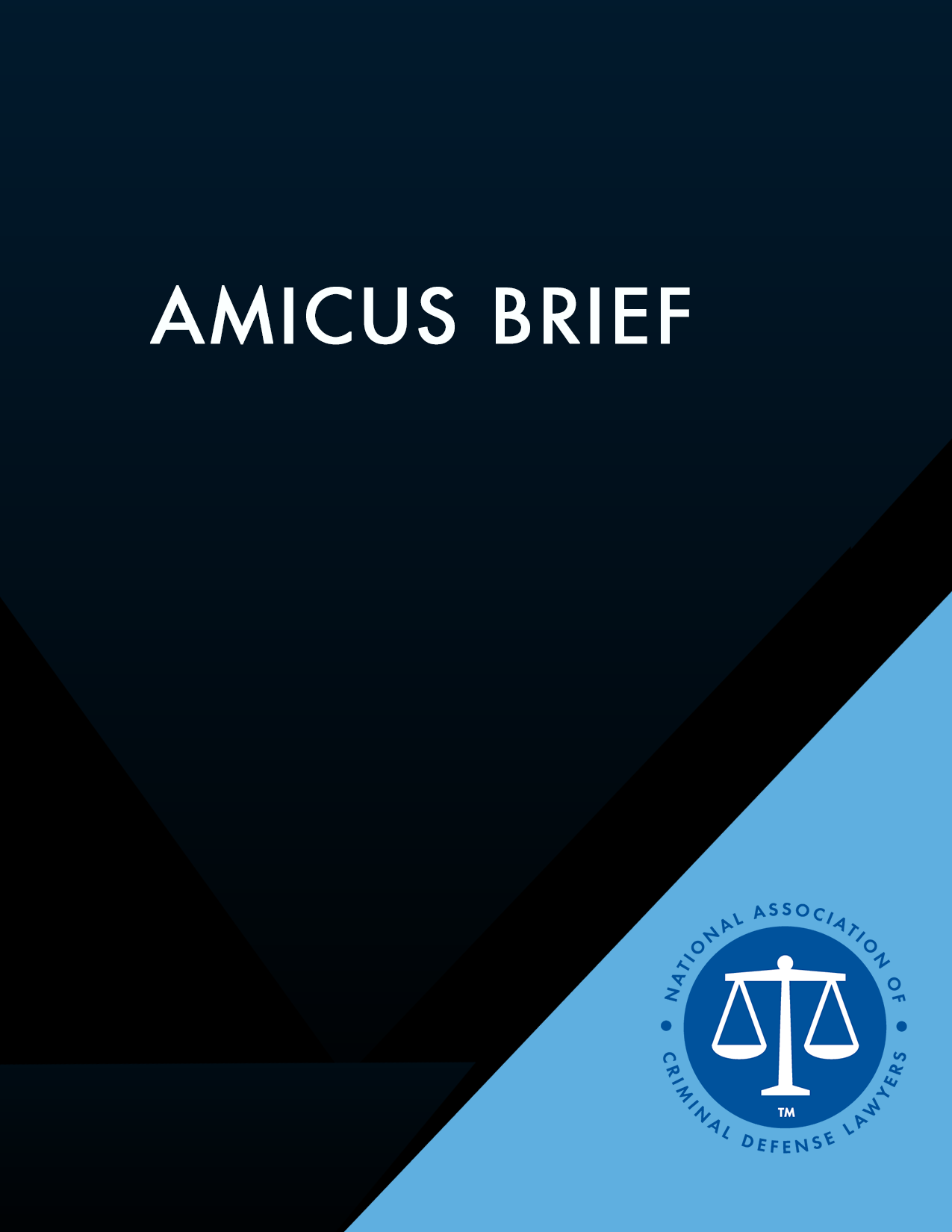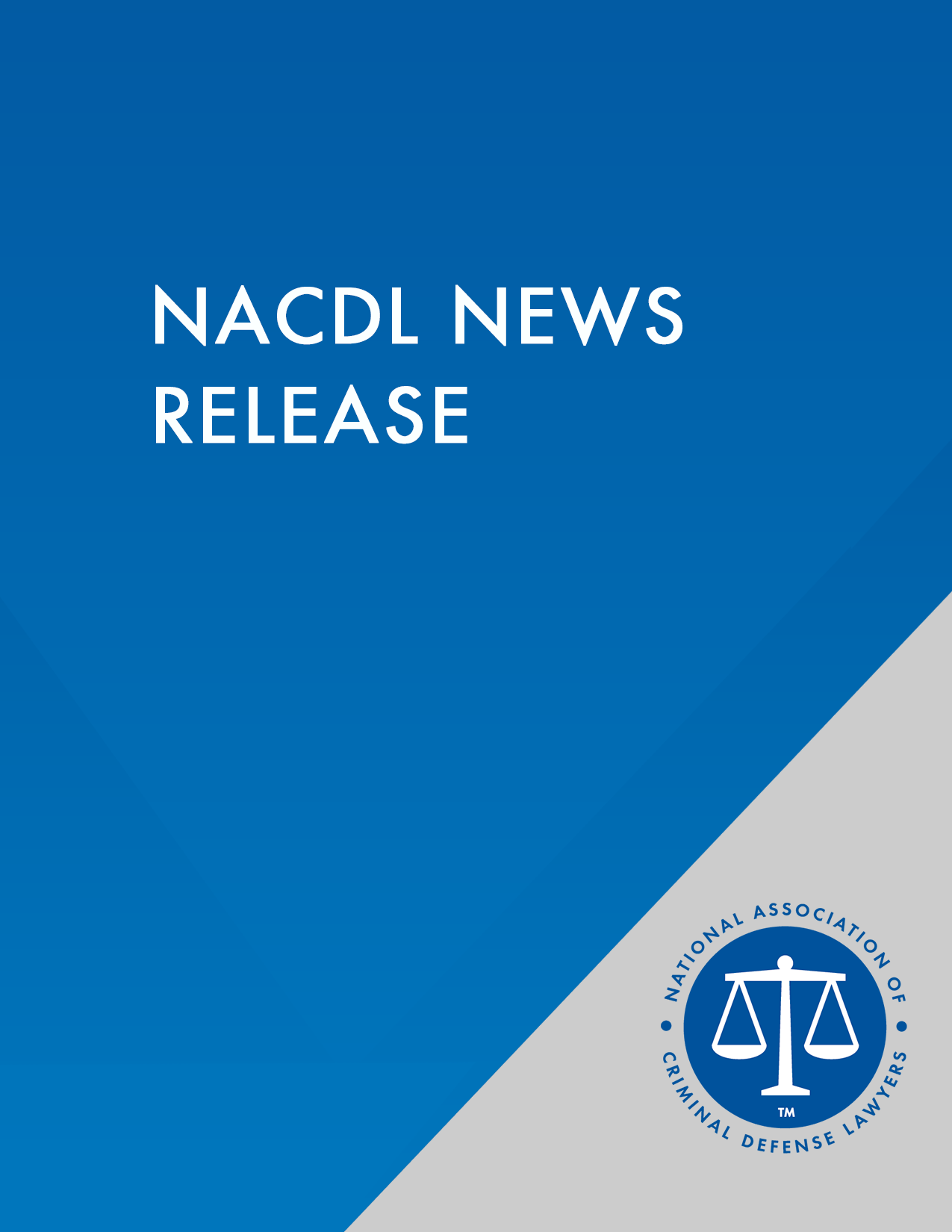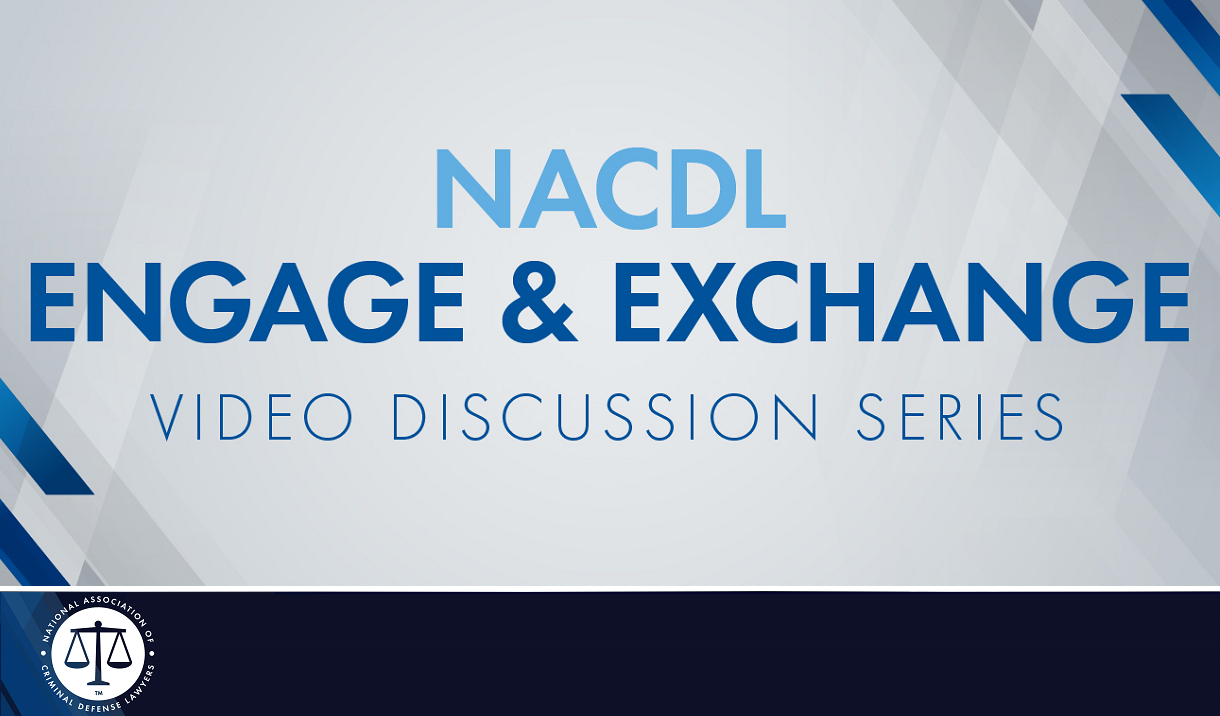Explore keywords to find information
RECENTLY ADDED & UPCOMING
-
The Champion

July 2025
Lawyers can use Generative AI for filtering and brainstorming, but they should exercise caution when trying to create original content.
-
Amicus Brief

Ellingburg v. United States
Brief of NACDL and FAMM as Amici Curiae in Support of Petitioner
-
News Release

News Release ~ DOJ Denaturalization Memo
National Association of Criminal Defense Lawyers Condemns DOJ Directive on Denaturalization – Washington, DC (July 1, 2025) – The National Association of Criminal Defense Lawyers (NACDL) condemns a recent Department of Justice (DOJ) directive calling for the revocation of citizenship for people accused of certain crimes via civil proceedings, which carry a lower burden of proof and do not require the government to provide the accused with an attorney if they cannot afford one.
-
Event

2025 Federal Sentencing CLE
The 34th Annual Honorable Elizabeth A. Kovachevich National Seminar on Federal Sentencing
LOCATION: Drury Plaza Hotel-Disney Springs, Lake Buena Vista, FL
DATES: July 30-August 1, 2025 -
Webinar

How to Use Data in White Collar Cases [Engage & Exchange]
WHEN: Wednesday, July 16, 2:00-3:30pm ET / 11:00am-12:30pm PT
CLE CREDIT: not available
COST: Free
This is a sponsored ad

MyCase
Manage Your Law Firm All in One Place
Featured Products
-

Challenging Carceral Forensic Software
This program arms defense attorneys with the legal strategies and technical understanding needed to challenge software evidence at every stage: expert qualifications, reliability under Rule 702, confrontation rights, discovery, due process, and more. You'll learn how to cross-examine government witnesses who rely on black-box technology they don’t truly understand—and how to force the court to take a closer look at what's really driving forensic conclusions. Learn how STRmix, TruleIO, ShotSpotter, and AI-generated sketches are marketed as scientifically validated, yet often evade scrutiny.
-

Pattern Cross-Examination for Digital Forensic Experts
This guide provides ready-to-use cross-examination questions, categorized by artifact type and case theme—from cell phone towers to deleted texts to smart devices and cloud forensics. Whether you’re handling a case involving child exploitation, stalking, or online fraud, this book delivers practical patterns designed to highlight sloppy forensics, bias, tool limitations, and assumptions of intent or identity. Defense attorneys don’t need a computer science degree—they need strategy, control, and the right questions to challenge the illusion of digital certainty in court.
-

Using Chat GPT in Criminal Cases - Writing Better Prompts
Want a motion written in plain language but grounded in Tennessee case law? Need a summary of Fourth Amendment jurisprudence with primary and secondary citations? This is where you learn how to get that—on demand, and with far less editing. This training is designed specifically for attorneys—busy professionals who need fast, accurate, and case-relevant AI support. Whether you’re drafting motions, brainstorming legal strategy, summarizing complex case law, or preparing cross-examinations, the quality of your AI output comes down to one thing: how you ask for it.
-

Alcohol, Blackouts and Consent in Sex Cases
This comprehensive training program provides defense attorneys with a rigorous, science-backed approach to dismantling prosecutorial narratives, exposing unreliable testimony, and ensuring that juries are properly educated on the complexities of memory, intoxication, and consent. You'll explores critical mistakes and misconceptions encountered in these cases, including errors in memory reconstruction after an event, incorrect inferences, cognitive schemas, suggestibility, contamination and misinformation, mistakes of fact and more.
-

Overcoming the Presumption of Guilt and Defining Reasonable Doubt
Reasonable Doubt, what is it?
In order to win criminal cases, the defense practitioner must object to a reasonable doubt standard that lowers the burden of guilt. This program will discuss proven methods to argue and define reasonable doubt persuasively to a jury. You’ll learn how define reasonable doubt using metaphors and hypothetical scenarios that force juries to dispute the evidence, conflicts in the evidence, or even lack of evidence in your case.
-

The DIY of DNA: Exoneration Through DNA Evidence
This presentation might be the first time you’re truly able to truly grasp the fundamentals of DNA evidence. This critical presentation blends real-world storytelling with clear, practical instruction—making DNA evidence finally feel accessible, even to non-scientists—while inspiring attorneys to dig deeper, ask smarter questions, and approach forensic science with newfound confidence. You’ll learn how to identify and interpret electropherograms, understand autosomal vs. Y-STR testing, and recognize the limits of DNA evidence—particularly when it involves partial or mixed samples.
